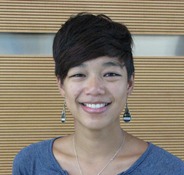Program Information
Repeatability of [F-18]-NaF PET Imaging Biomarkers for Bone Lesions: A Multicenter Study
C Lin1*, T Bradshaw1 , T Perk1 , S Harmon1 , G Liu2 , R Jeraj1 , (1) University of Wisconsin - Madison, School of Medicine and Public Health, Madison, WI
Presentations
TU-AB-BRA-5 (Tuesday, July 14, 2015) 7:30 AM - 9:30 AM Room: Ballroom A
Purpose:
Quantifying the repeatability of imaging biomarkers is critical for assessing therapeutic response. While therapeutic efficacy has been traditionally quantified by SUV metrics, imaging texture features have shown potential for use as quantitative biomarkers. In this study we evaluated the repeatability of quantitative ¹⁸F-NaF PET-derived SUV metrics and texture features in bone lesions from patients in a multicenter study.
Methods:
Twenty-nine metastatic castrate-resistant prostate cancer patients received whole-body test-retest NaF PET/CT scans from one of three harmonized imaging centers. Bone lesions of volume greater than 1.5 cm³ were identified and automatically segmented using a SUV>15 threshold. From each lesion, 55 NaF PET-derived texture features (including first-order, co-occurrence, grey-level run-length, neighbor gray-level, and neighbor gray-tone difference matrix) were extracted. The test-retest repeatability of each SUV metric and texture feature was assessed with Bland-Altman analysis.
Results:
A total of 315 bone lesions were evaluated. Of the traditional SUV metrics, the repeatability coefficient (RC) was 12.6 SUV for SUVmax, 2.5 SUV for SUVmean, and 4.3 cm³ for volume. Their respective intralesion coefficients of variation (COVs) were 12%, 17%, and 6%. Of the texture features, COV was lowest for entropy (0.03%) and highest for kurtosis (105%). Lesion intraclass correlation coefficient (ICC) was lowest for maximum correlation coefficient (ICC=0.848), and highest for entropy (ICC=0.985). Across imaging centers, repeatability of texture features and SUV varied. For example, across imaging centers, COV for SUVmax ranged between 11-23%.
Conclusion:
Many NaF PET-derived SUV metrics and texture features for bone lesions demonstrated high repeatability, such as SUVmax, entropy, and volume. Several imaging texture features demonstrated poor repeatability, such as SUVtotal and SUVstd. These results can be used to establish response criteria for NaF PET-based treatment response assessment.
Funding Support, Disclosures, and Conflict of Interest: Prostate Cancer Foundation (PCF)
Contact Email:


